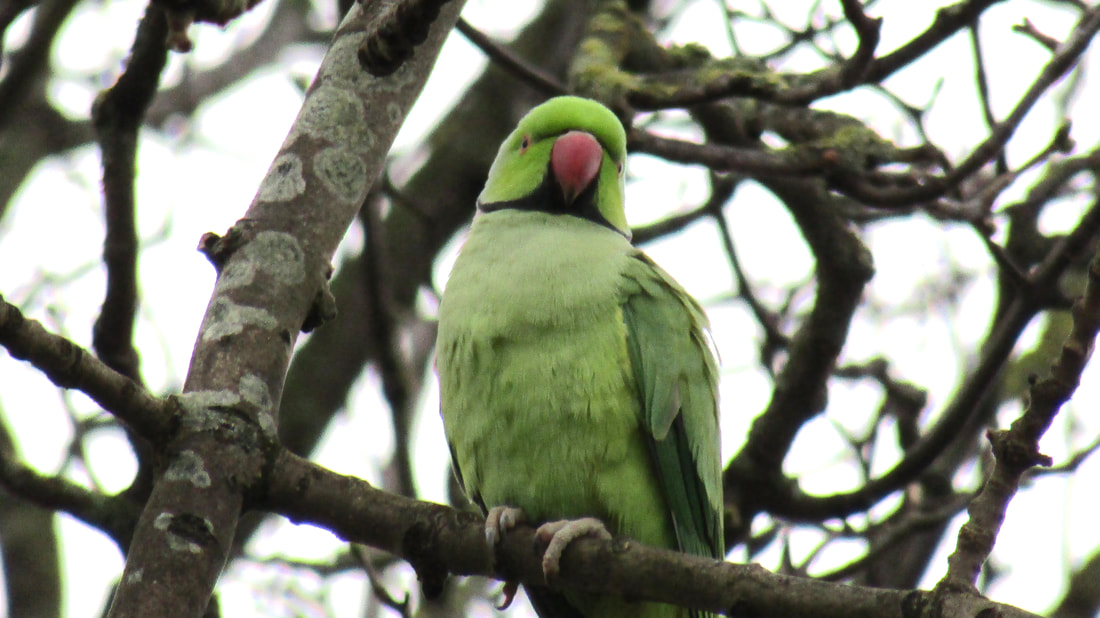|
Hearing the squawk of Ring-necked Parakeets on tv instantly transports me to the heat and aromas of India, where these bright green, long-tailed birds are abundant. The species is not native to Britain, but has been spreading since the 1960s. Its call still takes me by surprise when I hear them in London, or the Thames corridor and there are small populations in other urban areas of England, but it remains unusual in Wales. Indeed, the latest Welsh Bird Report published this week, has removed Ring-necked Parakeet from the official list of Welsh birds because of an absence of evidence that those seen here originate from the naturalised population and are not escaped pets. A pair bred at Gresford Flash, near Wrexham, in 1979 and attempted to breed there in 1980, but there have been no subsequent Welsh breeding records.
Now a citizen science project by researchers at Imperial College London is seeking readers’ help to map the state of Ring-necked Parakeets across Britain. Two flew over Rhyl last week, and at least one was subsequently at the nearby Brickfields Pond nature reserve. Parakeets are regular visitors to gardens in southeast England, and one has been visiting feeders in Llanddulas since mid-December. If you have seen a Ring-necked Parakeet recently, please report it to paratweets.com. Less exotically colourful, but more typical for winter in North Wales, four Snow Buntings are on the Great Orme and at Kinmel Bay, with another six on the summit of Carnedd Llewellyn on Sunday. The sunshine encouraged a Redwing into song as I walked my local woods on Sunday, while a Willow Warbler singing at Llanddeusant on 25 February was either the earliest Welsh migrant this century or a rare overwintering bird. An Iceland Gull is at Brickfields Pond, Long-tailed Duck on Cors Erddreiniog and Avocets have arrived at RSPB Burton Mere Wetlands.
1 Comment
Tom Henderson
20/3/2024 10:47:46
Spotted in Waterloo gardens cdff
Reply
Leave a Reply. |
Bird notesA weekly update of bird sightings and news from North Wales, published in The Daily Post every Thursday. Archives
July 2024
Categories |

 RSS Feed
RSS Feed
